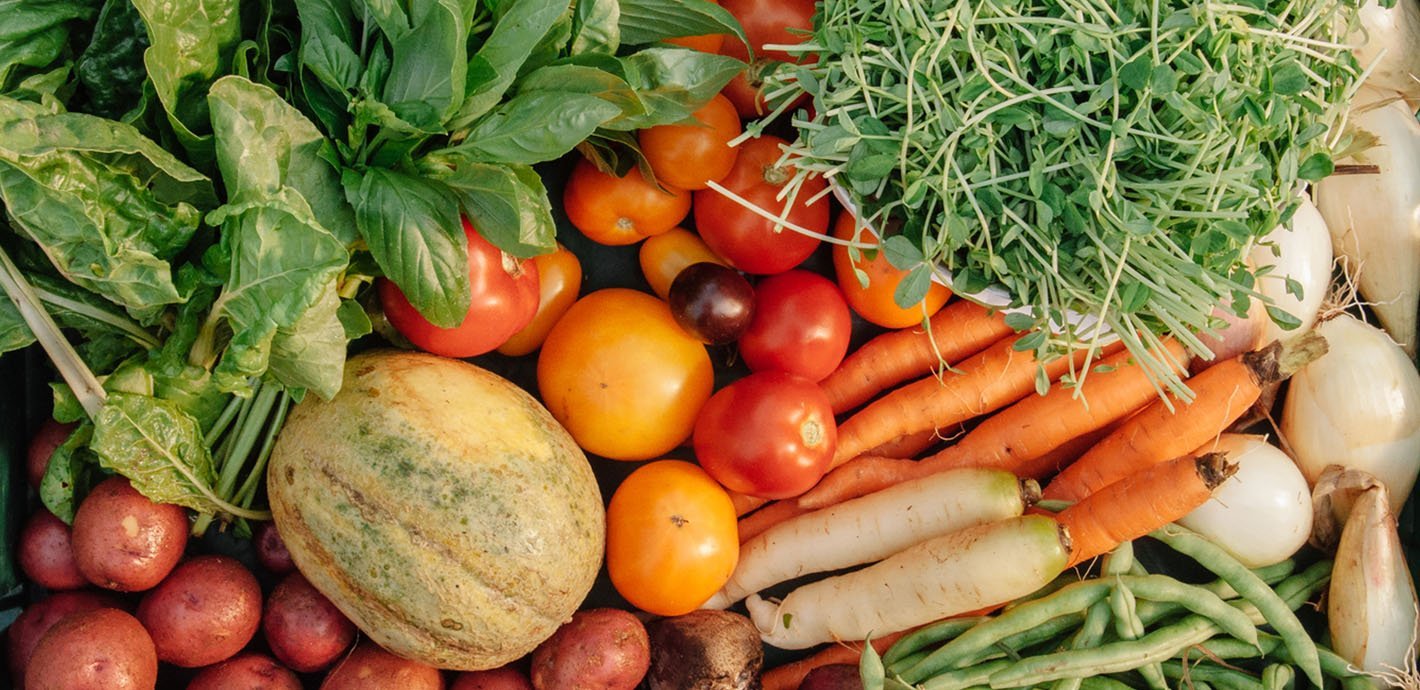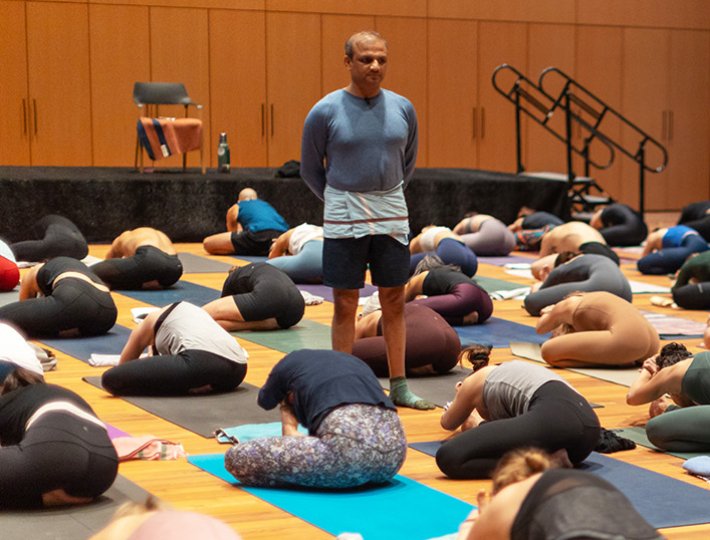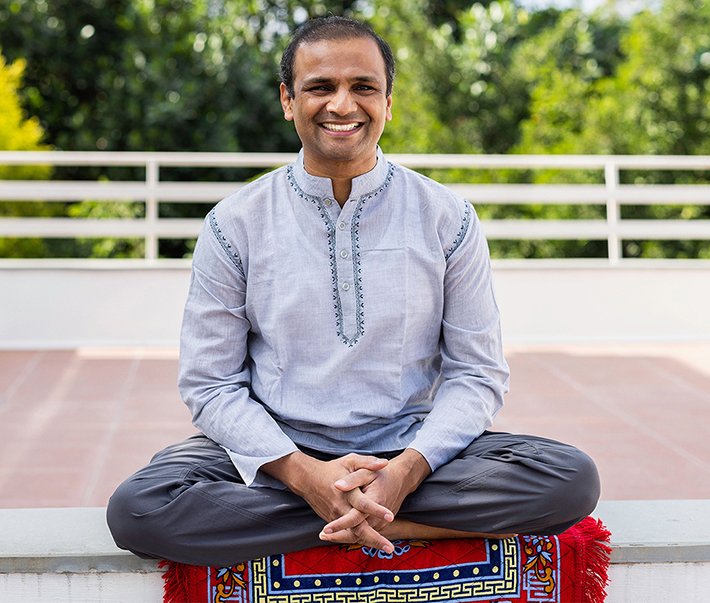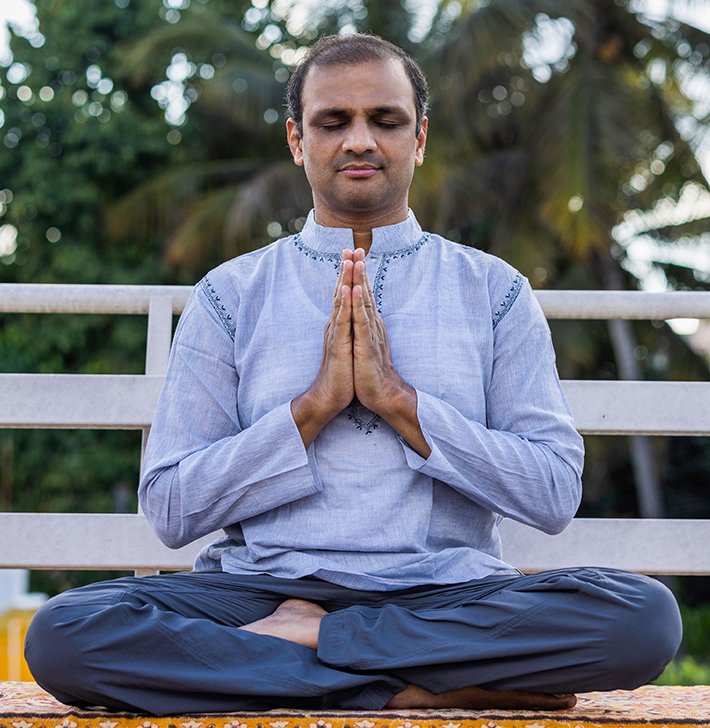Years ago, my life was consumed by almost unbearable anxiety, crash diets, caffeine, alcohol, and cigarettes. It was clear I needed a change, so I immersed myself in Eastern and Western ideas and literature on wellness. Out of all my studies into mind-body health, it was yoga, and especially the self-care aspect of yoga called Ayurveda, that stuck out. I found these ancient practices for self-healing to be powerful, intuitive, and incredibly nurturing. The more I worked with the principles of Ayurveda, the more my anxious heart calmed down. My body got simultaneously stronger and softer. I started to feel truly at home in my own skin.
The word “Ayurveda” (pronounced AYE-YOUR-VAY-DAY, with the accent on the VAY) comes from the combination of “ayur,” meaning life, and “veda,” meaning knowledge. So Ayurveda is literally “the knowledge of life.” It is a back-to-basics, natural approach to living—a complex mix of oral and written instruction, philosophy, mythology, spirituality, and scientific knowledge. It is highly evolved folk medicine and tradition—simple yet profound, mundane but magical.
Ayurveda is one of the four Upavedas, or secondary teachings, rooted in the oldest spiritual texts of ancient India, the Vedas. Widely considered to be humanity’s most ancient healing science, these millennia-old texts address all aspects of healing and well-being for both the body and mind. Much of this tradition of Ayurvedic medicine and philosophy was transmitted orally, from teacher to student. Today, we are lucky to still have several seminal texts that form the basis of classic Ayurvedic medicine and organize the principles of its philosophy. These texts and practices date back to somewhere between 450 to 1500 B.C.E. and include the Caraka Samhita, Sushruta Samhita, Ashtanga Hridayam, Ashtanga Samgraha, Madhava Nidanam, and the Sarangadhara Samhita.
Ayurveda originated in the early Indus Valley civilization and eventually gained great prestige, spreading all over India, Sri Lanka, and even into Tibet, China, and Nepal. In fact, it formed the basis for many forms of traditional medicine practiced in these countries in later years. The colonization of India brought an abrupt end to Ayurveda’s thriving; the British colonialists denounced Ayurveda as a backward, inferior folklore and replaced it with Western medicine. Ayurveda continued to be practiced beneath the radar in rural areas and in monasteries. Today, it is undergoing a huge resurgence in India and North America as well as many other Western countries, as we look to combine the science and technology of traditional Western medicine with Ayurveda’s holistic, preventative healing arts. Its renaissance is even more understandable here in the United States, as healthcare costs surge and many of us seek prevention as a means of empowerment and begin to look more toward nature-based healing.
Radical Self-Honesty and Awareness
Ayurveda is a philosophy and an approach to wellness that holds self-awareness as the essence and foundation of good health. Its long-revered teachings offer insights so simple yet so profound that you may have a hard time believing how powerful they are. And how do we align ourselves with this cosmic sweetness, according to Ayurveda? By learning how to live in accordance with the never-ending ebb and flow of the Big Mama herself: Mother Nature.
Ayurveda not only aligns us with the macrocosm of Mother Earth, but it also helps us learn to dive deep inside the mini-universe of ourselves through self-observation and self-love. True self-seeing requires a willingness to look deeply at our own life challenges and areas of confusion. It asks us to ponder difficult questions like, “Where is my life lacking sweetness and nurturing to such an extent that I find myself reaching for bonbons late at night, snuggling up with a wine bottle, or calling up ex-boyfriends I had good reasons for leaving?” This type of inner-looking is vital because the more we understand the dark corners of our heart, the more our body and mind will naturally begin to align with the purity that is our true nature.
More specifically, Ayurveda says that there are three pillars of life that must be balanced for optimal health. They are food, sleep, and observance of “bramacharya,” the wise use of vital energy. Ayurveda offers a particularly unique approach to diet. According to this system, choosing the right foods for your body, as well as the time of day or even the particular season of year, is essential for well-being. Ayurveda does not parse food into calories, vitamins, and minerals. It embraces the holistic energy of different foods and analyzes their qualities (such as hot/cold, light/heavy, dry/wet). Individuals can be analyzed for their qualities as well: Do you tend to run hot or cool? Do you typically feel heavy or light? Is your skin consistently dry or oily? By identifying your own qualities, you can make food choices that are appropriate for your own unique being. This approach to nourishment, combined with restorative sleep and a healthy connection to your physical and energetic sexual centers, are all key to boosting health.
From our partner: Learn more about Ayurvedic self-care with this guide by the editors of Yoga Journal.
Mother Nature? What If I Live in New York?
It may seem challenging to think of aligning with the tides of Nature. Many of the women I know live in crowded cities and tight apartments. They are moms, trucking their kids around town to endless extracurricular activities, battling busy highways, drinking super-charged double espresso macchiatos. All of us communicate in real-time on the information super-highway, texting instant messages to distant loved ones. It stands to reason that amid the speed and information overload of life in the modern world, we struggle with creating balance as natural beings.
I used to be exactly that kind of woman. I lived in the hustle and bustle of the San Francisco Bay Area, and I felt crummy a lot of the time. When I started studying Ayurveda, I discovered that the women of centuries past were not as disconnected from their innate healing capacities as women of today. They used ancient tools and techniques for self-care and nourishment, and these very same tools can make life in today’s labyrinth of the hectic Western world much easier. Much calmer. Much happier. And most importantly, these tools can lead us to a feeling of deep satisfaction within the complex tapestry of our everyday life. Taking on this practice can empower us to cultivate internal tools that help us to lead a healthy, balanced life that doesn’t sacrifice our essential nature.
This piece was adapted from Katie Silcox’s upcoming book, Healthy, Happy, Sexy: Ayurveda Wisdom for Modern Women (January 2015).








Comments (1)